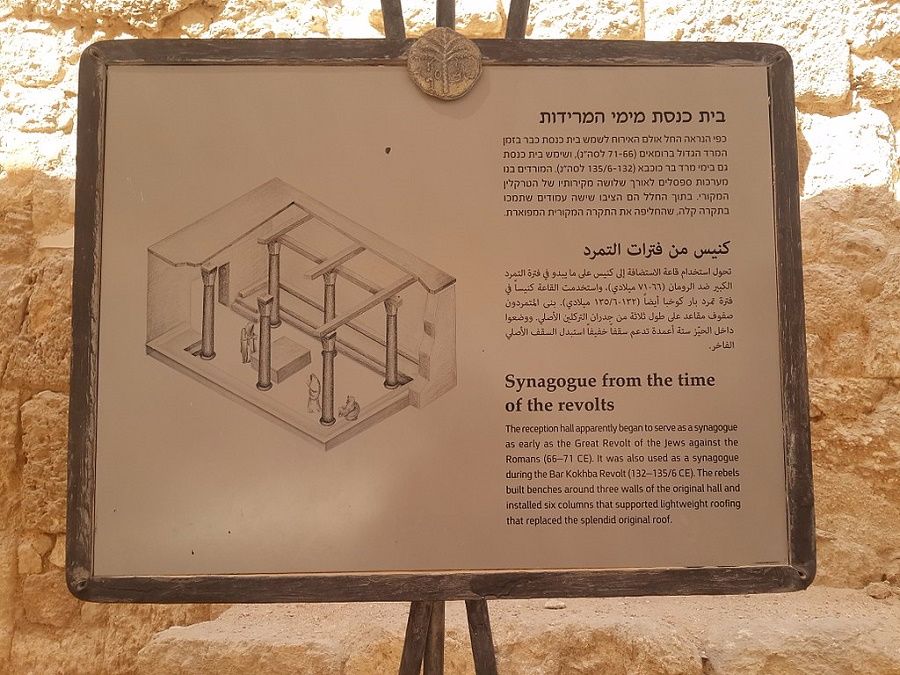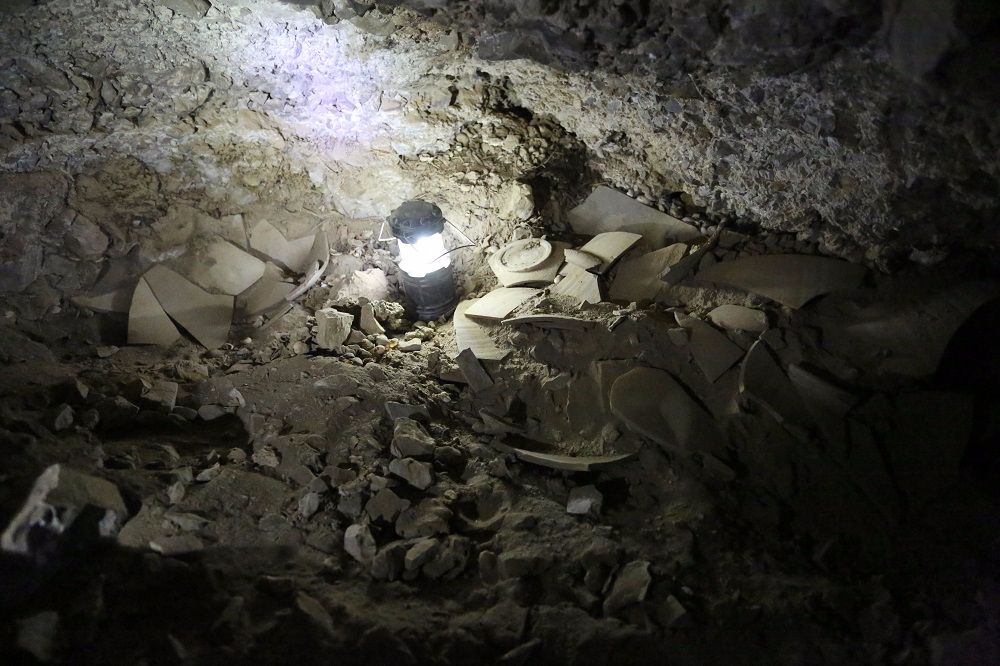 Edit article
Edit articleSeries
Part 3
Socio-Religious Background and Stabilization

Aerial photograph of Masada (Hebrew מצדה), Israel. Andrew Shiva / Wikipedia /
The biblical texts found in Judean Desert sites outside of Qumran always represent proto-MT and those found in Qumran never do with the sole exception of one tefillin, 8QPhyl I. The key to understanding this sharp difference lies in the socio-religious background of the archeological sites.

Both the earlier site of Masada (scrolls written between 50 BCE and 30 CE) and the later Bar Kochba sites (scrolls written between 20 BCE and 115 CE), in contradistinction with Qumran, were used by people (i.e., the Masada rebels and the freedom fighters of Bar-Kochba) who closely followed the guidance of the (proto-)rabbinic spiritual centers in religious matters, and thus they used exclusively the proto-Masoretic text embraced by the spiritual leadership.[1]
A close link between the Rabbis and the proto-Masoretic text is also reflected in the content of the tefillin from the Judean Desert written in the MT style that reflect the instructions of the rabbis, preserved in later rabbinic texts.[2]
MT-Like Texts in Qumran
Although the Qumran texts display a wide textual variety, proto-MT does not appear there. Nevertheless, some Qumran texts are close to MT (for example, 1QIsab, 4QJera,c), differing in up to 10% of their words from (proto-)MT. I have named these texts “MT-like” and they belong to the same larger text family that contains proto-MT.
The Stabilization of Proto-MT: Conscious or Accidental?
After several centuries of textual plurality, a period of uniformity and stability can be discerned within Judaism at the end of the 1st century CE. How did this occur?
Conscious Stabilization
Many, if not most, scholars believe that proto-MT was created as the result of a conscious and organized effort to stabilize the text of Scripture.[3] According to this model, after the destruction of the Second Temple, Jewish leadership pushed for the creation of a standard text for Palestine as a whole.
However, textual stability (that is, when all sources use the same text) should not be confused with an organized process of stabilization. In my view, stability was likely caused by another factor.
Accidental Stability
After the destruction of the Temple, the Qumran texts were hidden in the caves and lost to history. Two other non-MT text types, SP and LXX, remained in use, but were cherished by religious groups that were no longer considered Jewish. Thus, with the splitting off from Judaism of the Samaritans and Christians, together with the destruction of centers like Qumran, MT was the only text surviving within Judaism from the previous plurality. This situation could easily create the illusion of a stability brought about by conscious stabilization by authorities.[4]
One factor that strongly supports “accidental” as opposed to “conscious” stability is the nature of the fragments found at the various Judean Desert discussed above. As noted, the difference between the sites is not chronological, but socio-religious.[5]
In other words, at the same time different groups made use of different texts, and this trend continued over time, but these groups either split off from Judaism (Christians and Samaritans) or disappeared (Qumran group), leaving the group that used proto-MT as the only remaining Jewish group. Thus, their version of Scripture became the only version left after the destruction of the Second Temple, and this version thus became the only version that was used by all streams of Judaism.

How the Proto-MT Was Created
In many ways, the origin of MT remains enigmatic. This text is far from being unified or consistent in its spelling and other editorial characteristics. Through the generations the MT scribes copied their scrolls faithfully, but these scrolls inherited an earlier tradition that was not always precise or consistent.
The variation in the nature and quality of the texts that ended up being included strongly implies that there was no selection process of manuscripts for inclusion in the archetype of MT.[6]Instead, there probably was only one candidate for inclusion in the archetype of MT for each text, and which text was chosen likely depended on coincidence.
The persons who created the archetype were, for the most part, unaware of differences between scrolls and did not pay attention to the small details under scrutiny in this study,[7]otherwise the specific MT text of Samuel, for instance, with its many errors as compared to the Qumran and LXX versions, would not have been included.
Large Books and their Units
Just as inconsistencies can be found in spelling and quality between the different books in the MT corpus, so too can they be found in individual books themselves. Large books, such as Samuel, Kings, Jeremiah, and Psalms, consisting of several smaller scrolls, could coincidentally be combined from scrolls of a different textual nature. Thus, two of the five books of Psalms in MT use elohim as the main divine appellation, while in the other three books it is YHWH.[8] For similar reasons, Jeremiah 27–29 differs in specific scribal details from the remainder of the book.[9]
The same processes happened in the creation of the archetype of the LXX, whose books differ much from one another. For example the different segments of the books of Samuel-Kings are of a differing nature.[10] We note that in a corpus that developed over the course of such a long period, internal differences such as those in the LXX and MT should be expected.
TheTorah.com is a 501(c)(3) nonprofit organization.
We rely on the support of readers like you. Please support us.
Published
December 8, 2017
|
Last Updated
November 16, 2025
Previous in the Series
Next in the Series
Before you continue...
Thank you to all our readers who offered their year-end support.
Please help TheTorah.com get off to a strong start in 2025.
Footnotes

Prof. Emanuel Tov is J. L. Magnes Professor of Bible (emeritus) in the Dept. of Bible at the Hebrew University, where he received his Ph.D. in Biblical Studies. He was the editor of 33 volumes of Discoveries in the Judean Desert. Among his many publications are, Scribal Practices and Approaches Reflected in the Texts Found in the Judean Desert, Textual Criticism of the Bible: An Introduction, The Biblical Encyclopaedia Library 31 and The Text-Critical Use of the Septuagint in Biblical Research.
Essays on Related Topics:









